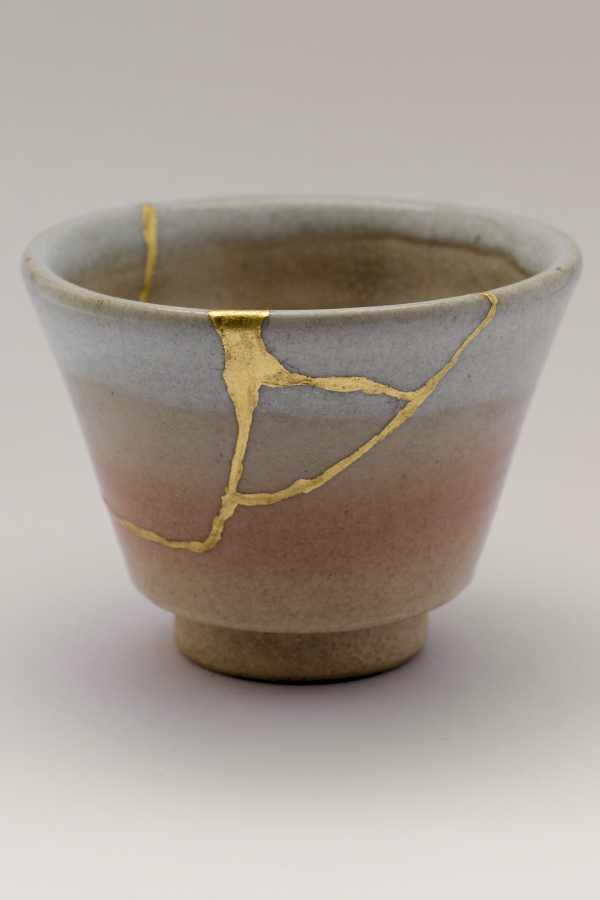

Celebrating Crafts From the Past: Reviving Kintsugi
Summary
Kintsugi, the Japanese art of repairing broken pottery with lacquer and powdered gold, silver, or platinum, celebrates the beauty of imperfections and resilience. Originating in the 15th century, kintsugi embodies Japanese philosophies such as wabi-sabi and mottainai, promoting the appreciation of flaws and sustainable practices. This ancient art has influenced various aspects of Japanese culture and has seen a resurgence in modern times, symbolizing personal healing and environmental consciousness. By embracing kintsugi’s principles, we can find beauty in imperfections, strength in adversity, and balance in our busy, consumer-driven lives.
Reflection Questions
- How can the philosophy of wabi-sabi be applied to your personal or professional life to help you appreciate imperfections?
- In what ways can adopting the mottainai principle influence your approach to consumption and waste reduction?
- How can the resilience demonstrated by kintsugi inspire you to view challenges and setbacks as opportunities for growth and transformation?
Journal Prompt
Reflect on a recent experience where you faced a significant challenge or setback. How did this experience change you, and what positive outcomes or lessons did you gain from it? Consider how the philosophy of kintsugi can help you embrace this experience as part of your personal journey, highlighting the beauty and strength that emerged from overcoming adversity. Write about how you can incorporate the principles of kintsugi into your daily life to find balance, embrace imperfections, and foster resilience.
Kintsugi—a beautiful and profound Japanese art—involves repairing broken pottery with lacquer mixed with powdered gold, silver, or platinum. Dating back to the 15th Century CE, this unique technique transforms broken items into pieces of art that embody resilience and honor the beauty of imperfections. In a world where mass production now takes precedence over traditional crafts, Kintsugi brings a time-honored touch of Japanese philosophy, cultural heritage, and aesthetics to contemporary design. In this article, we explore the revival of Kintsugi pottery and its relevance in today’s society—highlighting its historical significance, modern applications, and the craftsmanship behind this timeless art.
Explaining The Art of Kintsugi Pottery
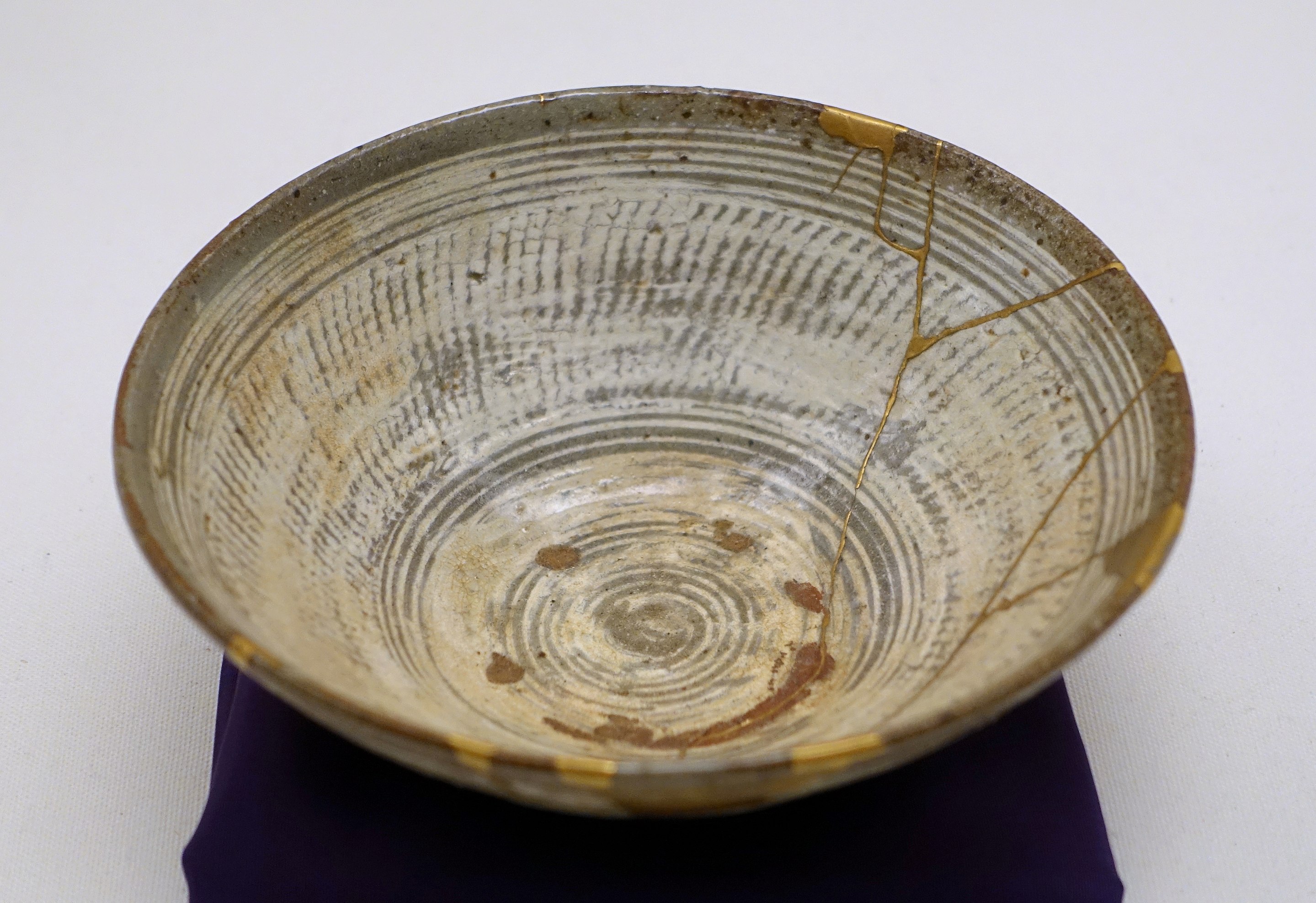

Kintsugi pottery is not merely a repair method; it is an art form that emphasizes the beauty of mended objects. The process begins with collecting the broken pieces of pottery and meticulously cleaning them. The pieces are then carefully joined using a special Japanese lacquer, often infused with powdered gold, silver, or platinum. This creates a striking contrast between the original ceramic and the metallic seams, highlighting the fractures rather than hiding them. This process turns each repaired item into a unique piece of art, celebrating its history and physical imperfections. It is most applicable to ceramic ware.
The philosophy behind Kintsugi is deeply rooted in the Japanese concept of Wabi-Sabi, which finds beauty in imperfection and transience. This philosophy teaches us to embrace flaws and see them as a part of the object’s journey. Kintsugi art thus becomes a powerful metaphor for human experiences, symbolizing resilience, acceptance, and the beauty that can emerge from brokenness.
The Historical Significance of Kintsugi Pottery
Kintsugi, often translated as “golden joinery,” is believed to have originated in the 15th century during the Muromachi period. The gold lacquer repair technique is attributed to a legend involving a shogun who was also a Japanese collector, named Ashikaga Yoshimasa. The shogun sent a broken tea bowl back to China for repairs.
When it was returned, he was dissatisfied with the unattractive metal staples used to mend it. This prompted Japanese craftsmen to develop a more aesthetically pleasing method, using lacquer mixed with powdered gold to repair the bowl.
Over time, the demand for kintsugi-repaired items grew so strong that some collectors were reportedly driven to extreme measures. There are anecdotes and historical accounts suggesting that collectors, enamored with the beauty and added value of kintsugi repairs, would resort to deliberately smashing valuable pottery to have it repaired in this manner. This practice highlighted their desire to own pieces that exemplified the kintsugi philosophy and aesthetic. Though it might not be considered “authentic kintsugi,” this approach was indeed popular.
Philosophical and Aesthetic Influence
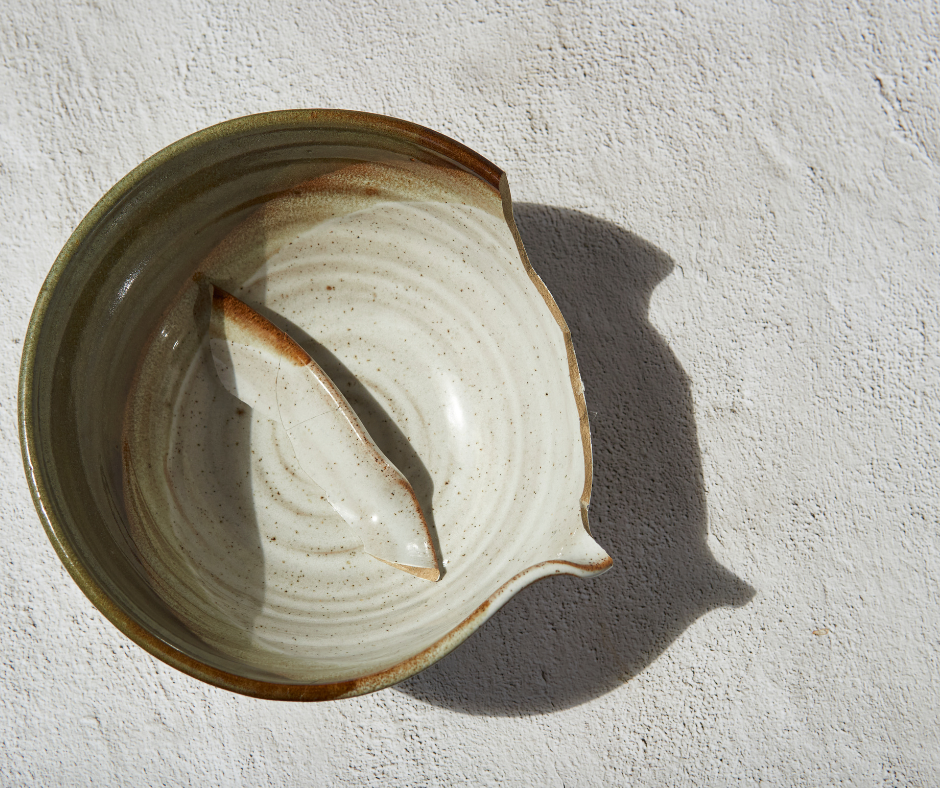

The technique of repairing broken objects quickly permeated other aspects of Japanese culture. Over the years, this golden repair method evolved into an art form deeply connected to Japanese philosophies and aesthetics. For example, kintsugi embodies the Japanese aesthetic of wabi-sabi, which finds beauty in imperfection and transience. The repaired pottery, with its visible cracks filled with gold, emphasizes the beauty of flaws and the passage of time.
Another Japanese philosophy, the Mottainai concept expresses regret over waste and encourages the recycling and reuse of materials. Kintsugi reflects this philosophy by transforming broken items into valuable, beautiful objects. Unlike other ceramic repair techniques, this practice also aligns with Zen principles of acceptance and the embrace of change. The repair process and the resultant piece reflect a journey of transformation and resilience.
Fuel your creative fire & be a part of a supportive community that values how you love to live.
subscribe to our newsletter
Social and Cultural Role in Japan
In its early days, kintsugi influenced various aspects of Japanese culture—from tea ceremonies to art and craftsmanship. Kintsugi-repaired ceramics quickly became cherished items in the Japanese tea ceremony, highlighting the importance of imperfection and history in this ritual. The technique also influenced other forms of Japanese art and craftsmanship, encouraging an appreciation for handmade and repaired items.
The Contemporary Cultural Impact of Kintsugi
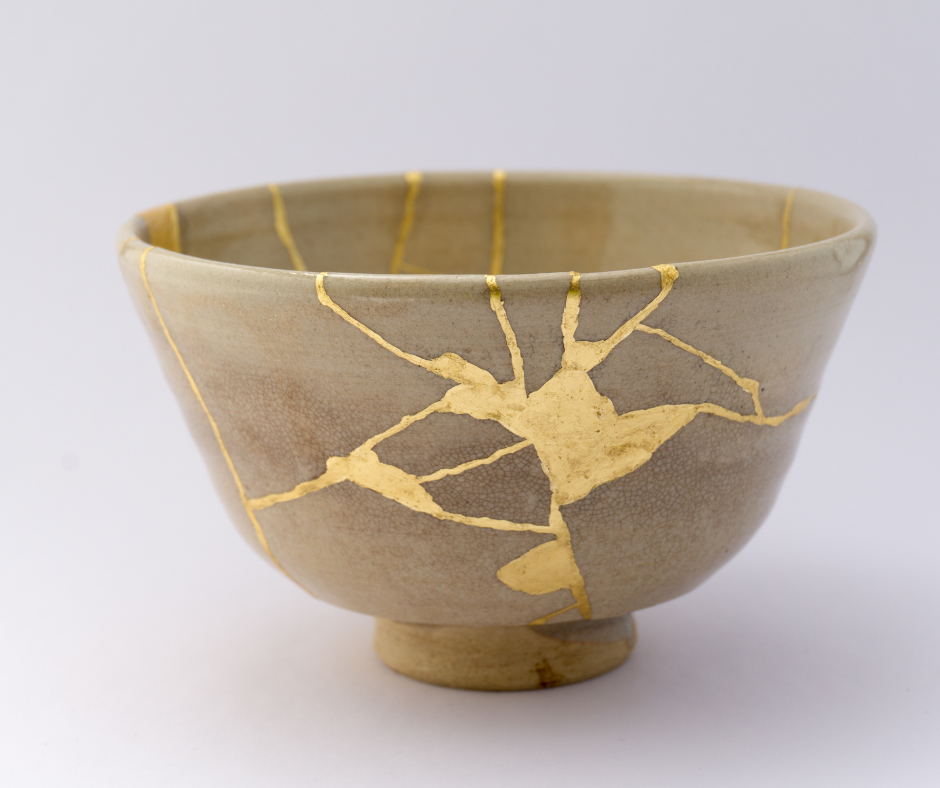

Kintsugi has experienced a resurgence in popularity both in Japan and internationally. It continues to be a powerful symbol and practice with significant cultural impact. In contemporary times, kintsugi is often used metaphorically to represent personal healing and resilience. The process of mending broken pottery is seen as an analogy for overcoming adversity and finding beauty in one’s scars.
The technique also aligns with modern sustainability and environmental consciousness. It promotes the idea of repairing and reusing items rather than discarding them, resonating with contemporary values of reducing waste.
Influence on Art and Design
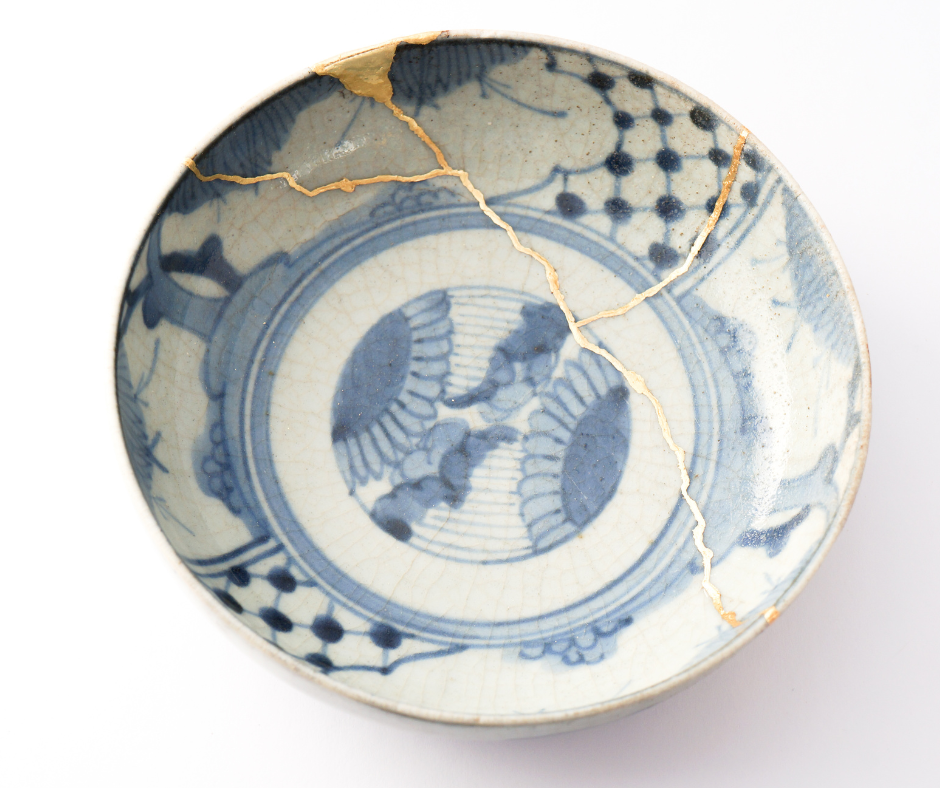

Kintsugi’s aesthetic principles have influenced modern art and design, too. Many contemporary artists incorporate kintsugi-inspired techniques in their work, using visible repairs as a form of artistic expression. The philosophy and aesthetics of kintsugi have been adopted in fashion, jewelry, and interior design, where visible mending and the celebration of imperfections have become trendy. Tomomi Kamoshita is one contemporary artist who has adapted kintsugi.
Tomomi Kamoshita
Tomomi Kamoshita is known for her innovative approach to kintsugi. Born in Tokyo in 1977, she graduated from the ceramics course at Joshibi University in 2000 and has held annual exhibitions since 2007. Kamoshita integrates traditional kintsugi techniques into her work, often using brass powder mixed with urushi lacquer to create modern pieces that blend found ceramics and sea glass. Her series “Gift from the Waves” reflects on themes of destruction and revival, drawing on the natural weathering of materials by the sea to create unique artworks
Popular Culture and Media
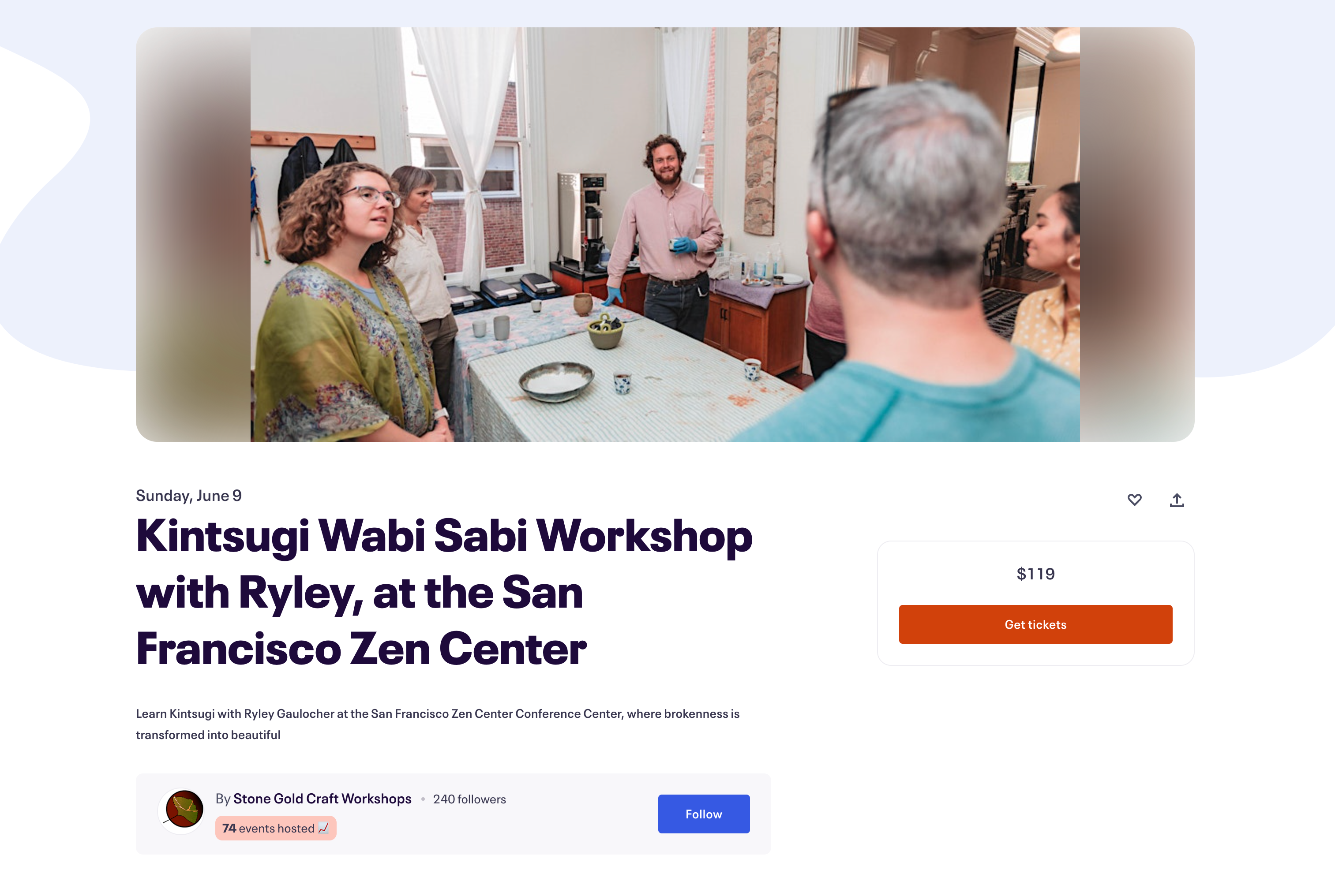

Kintsugi has permeated popular culture and media. For example, the technique and its philosophy are often referenced in literature and films, symbolizing themes of resilience, healing, and beauty in imperfection. Kintsugi workshops and classes (like this one at the San Francisco Zen Center) have become popular, attracting people interested in learning the craft and applying its principles to their lives.
Adopting the Philosophical Underpinnings of Kintsugi Pottery in Our Own Lives
Incorporating the philosophical underpinnings of kintsugi into our lives as creative, busy women in a consumer-driven culture can provide a powerful framework for finding balance, embracing imperfections, and fostering resilience. Below are some ways to do so.
Embrace Imperfection
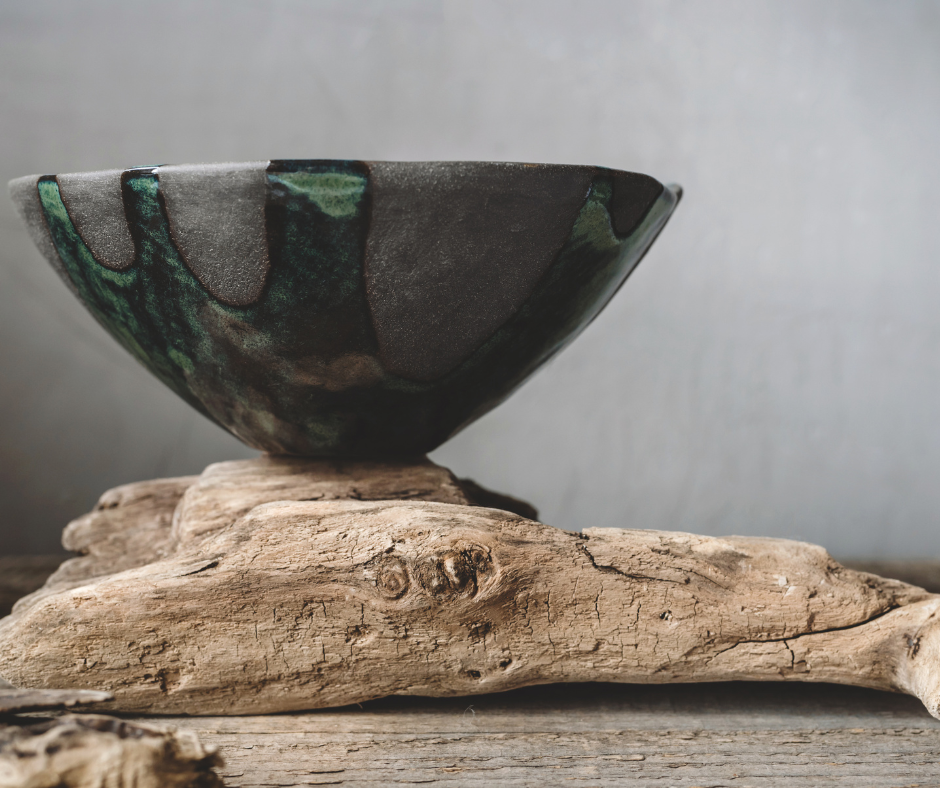

The philosophy of wabi-sabi encourages us to recognize and celebrate the beauty of imperfections in ourselves and our surroundings. Accepting that flaws and imperfections are natural can add to our unique beauty and character. Instead of striving for an unattainable standard of perfection in work or home life, appreciate the effort and intention behind your actions. This shift in perspective can reduce stress and promote self-acceptance, leading to a more fulfilling and authentic life.
Find Strength in Adversity
Kintsugi teaches us to find strength and beauty in adversity. Just as kintsugi repairs broken pottery with gold, we can transform our challenges and hardships into sources of strength and beauty. Reflecting on past challenges and identifying the positive outcomes or lessons learned can build resilience and confidence for facing future obstacles. Embracing this mindset helps navigate difficulties with grace and resilience, reminding us that adversity can lead to personal growth and new opportunities.
Reduce Consumerism
Adopting the philosophy of mottainai, which emphasizes reducing waste and valuing what we have, can counteract the pressures of consumer culture. By focusing on repairing, repurposing, or upcycling items instead of constantly buying new ones, we can reduce waste and foster creativity and resourcefulness. Applying the kintsugi principle to belongings by repairing broken items with care and creativity makes our possessions more meaningful and unique.
Balance and Simplicity


Incorporating principles of mindfulness and simplicity into daily life can help find balance amidst the chaos. Setting aside time for mindfulness practices such as meditation, deep breathing, or simple reflective activities can keep us grounded and focused. Simplifying schedules by prioritizing tasks that align with our values and letting go of unnecessary commitments creates more space for meaningful activities and reduces overwhelm.
Intentional Living
Bringing mindfulness and intention to everyday actions, whether it’s work, family time, or personal hobbies, enhances satisfaction and reduces stress. Focusing on being fully present in whatever we are doing, rather than multitasking or rushing through tasks, can lead to a more fulfilling life. Enjoying the process rather than just aiming for the end result, especially in creative projects, fosters inspiration and personal fulfillment.
Personal Growth and Creativity
Using creative activities as a form of self-expression and reflection helps process experiences and emotions, providing a therapeutic outlet and fostering personal growth. Engaging in hobbies such as journaling, painting, or crafting can be deeply rewarding. Creating personal kintsugi projects, where we repair or transform items that hold sentimental value, serves as a symbolic act of healing and renewal.
Community and Connection


Connecting with others who share similar values and experiences fosters a sense of community and support. Participating in groups or activities focused on mindfulness, sustainability, or creativity provides encouragement and inspiration. Joining local workshops on kintsugi or related crafts can be a way to learn new skills, meet like-minded individuals, and deepen our appreciation for the philosophy behind the art.
Final Thoughts on the Japanese Art of Kintsugi Pottery
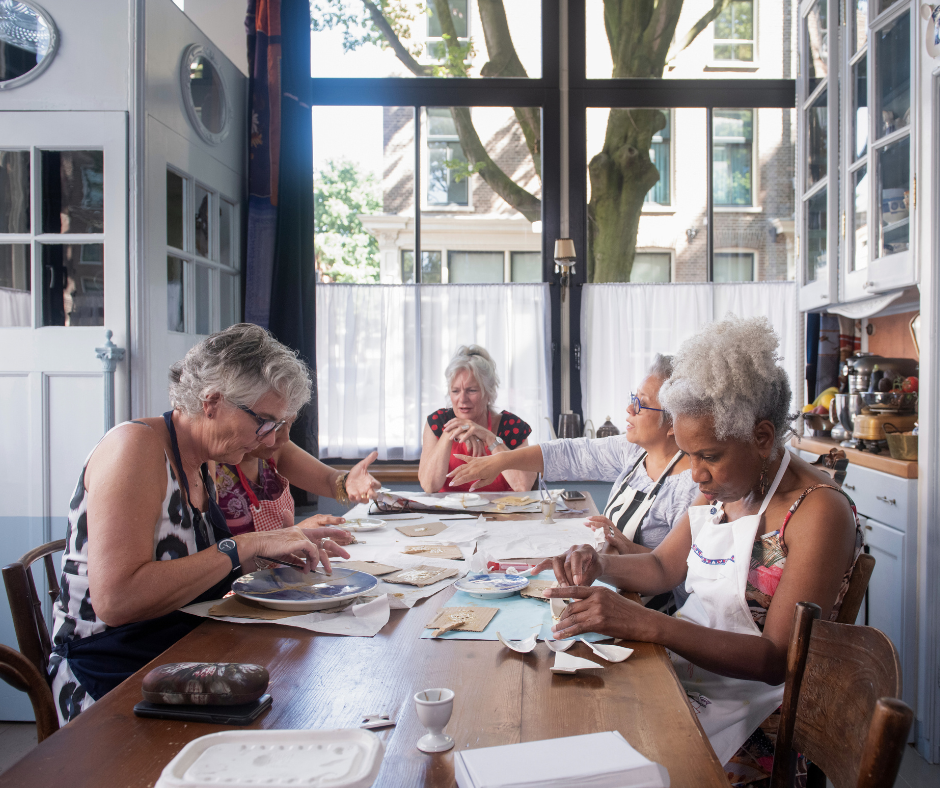

Kintsugi pottery is beautiful and meanintful when created as a thoughtful response to broken objects (not just repairing deliberately damaged pieces). However, kintsugi is not just an art form but also an approach to life. By integrating these practices and philosophies into our lives, we can navigate the complexities of modern living with greater resilience, creativity, and mindfulness. Embracing the principles of kintsugi helps us find beauty in imperfections, strength in adversity, and balance in a fast-paced world.
By Anila Hasnain.








